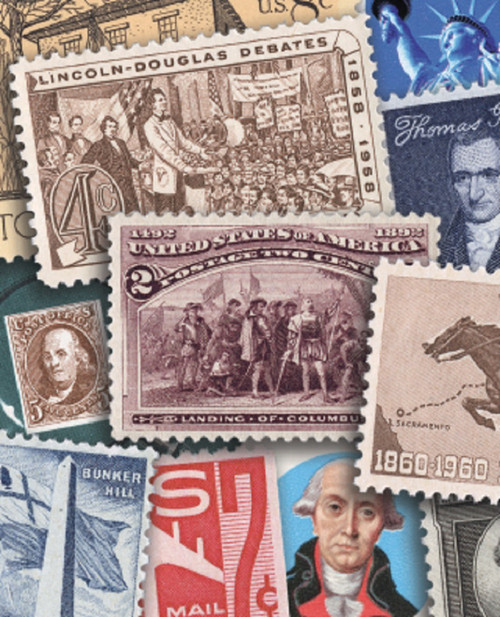
# 295//717 - 1901-32 U.S. Commemorative "2¢ Reds" - 40 stamps
Get an Instant Collection of U.S. "2¢ Reds" Now
Revolutionary War Sesquicentennial
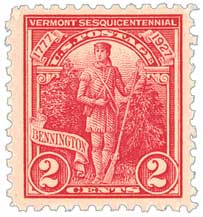
On August 3, 1927, the US Post Office issued two stamps honoring significant events from the Revolutionary War in 1777.
One of the stamps is the Vermont Sesquicentennial stamp. The stamp honors the Battle of Bennington and pictures a Green Mountain Boy. The other stamp honors the Saratoga Campaign and pictures the surrender of General Burgoyne. It also honors the Battle of Bennington, with an inscription on the right-hand side.
Although US #644 is called the “Burgoyne Campaign,” it commemorates several different events. In fact, General John Burgoyne isn’t the central character in the stamp and it wasn’t originally intended to honor him, as he was a British general fighting against the revolutionaries. The stamp pictures Burgoyne (left of center) handing his sword to General Horatio Gates of the Continental Army. The stamp image is based on John Trumbull’s 1821 painting Surrender of General Burgoyne.
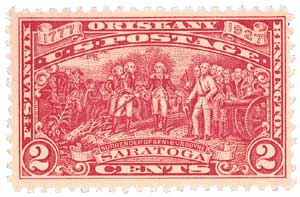
The history behind the stamps…
Known as Gentleman Johnny, General Burgoyne first arrived in Quebec in May 1777, planning to take control of New York’s Hudson River and Mohawk Valley. Commanding about 7,700 British troops, Indians, Germans, and American loyalists to Britain, Burgoyne captured Fort Ticonderoga. But he was slowed to only one mile a day by his excessive baggage train and the American forces who had cut down trees to slow his progress.
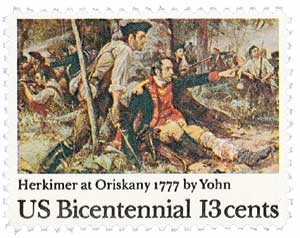
The Battles of Fort Stanwix and Oriskany
On August 3, British Lieutenant Colonel Barry St. Leger began an attack on Fort Stanwix, located in present-day Rome, New York. As the fort’s 750 men defended themselves, a group of 800 soldiers from Fort Dayton began a 30-mile trek to provide support. However, St. Leger knew they were coming and planned an ambush on them six miles from Fort Stanwix in Oriskany, with the help of the Brits’ Native American Mohawk allies.
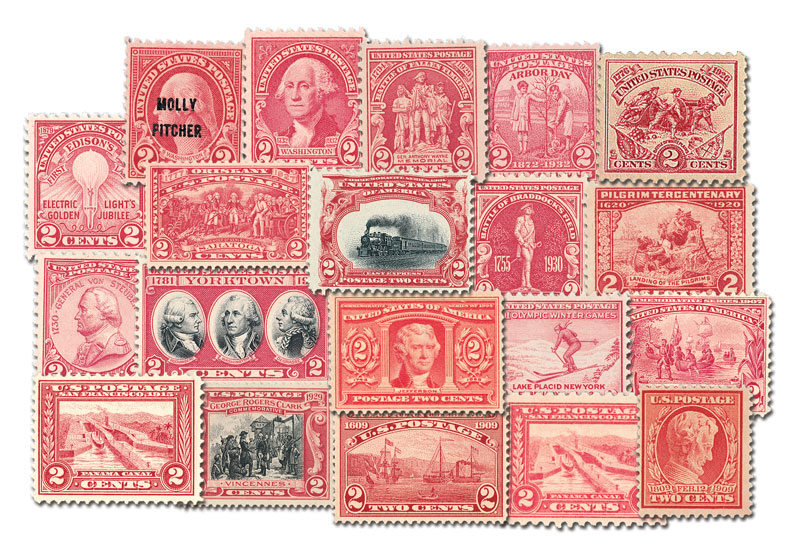
The ambush was devastating, resulting in 465 casualties among the colonists. General Nicholas Herkimer himself was shot in the leg, but continued to direct the rebels in battle while propped up against a tree. Unfortunately for him, the wound became infected, and he died following a poorly performed amputation 10 days later. However, during the battle, messengers reached Fort Stanwix and American Lieutenant Colonel Marinus Willett led out a force of 250 men to raid the undefended British and native camp. When the Mohawk learned of this, they withdrew from the battle to defend the camp. In all, the British and their allies suffered only 28 casualties. With Herkimer’s men in no shape to relieve Fort Stanwix, Benedict Arnold put together a force of 700 men to come to their aid. As the relationship between the Native Americans and the British soured, St. Leger was forced to retreat to Quebec through Oswego, leaving him unable to meet Burgoyne at Albany in time.
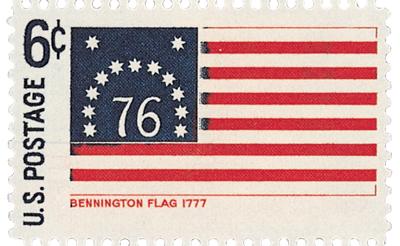
The Battle of Bennington
Meanwhile, Burgoyne and his men were critically low on supplies. Knowing the Continental Army stored weapons and supplies at Bennington, Vermont, Burgoyne sent a raid. They were surprised to find more than 1,600 soldiers from New Hampshire and Vermont protecting the supplies. More than 200 British soldiers were killed with another 700 taken prisoner. The actual fighting in the Battle of Bennington didn’t take place in Vermont, but rather about 10 miles from Bennington in Walloomsac, NY. However, it was fought predominantly by Vermont soldiers just west of the Vermont border.
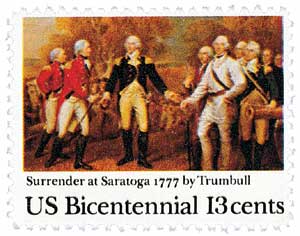
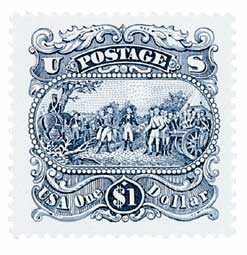
Surrender at Saratoga
Burgoyne continued to move toward Albany, losing another 600 men at Freeman’s Farm on September 19, 1777. Less than a month later, Benedict Arnold led another successful campaign against Burgoyne at Bemis Heights, causing another 600 casualties among the British soldiers. As his forces grew smaller and weaker, Burgoyne finally retreated north to Saratoga but was surrounded by American forces outnumbering him three to one. By October 17, he surrendered.
The victories at these New York locations not only kept the British from taking control of New York, but they showed the doubtful French that the colonists were capable of winning the war. Shortly after Burgoyne’s surrender, the French joined the American cause and helped win the war.
Get an Instant Collection of U.S. "2¢ Reds" Now
Revolutionary War Sesquicentennial

On August 3, 1927, the US Post Office issued two stamps honoring significant events from the Revolutionary War in 1777.
One of the stamps is the Vermont Sesquicentennial stamp. The stamp honors the Battle of Bennington and pictures a Green Mountain Boy. The other stamp honors the Saratoga Campaign and pictures the surrender of General Burgoyne. It also honors the Battle of Bennington, with an inscription on the right-hand side.
Although US #644 is called the “Burgoyne Campaign,” it commemorates several different events. In fact, General John Burgoyne isn’t the central character in the stamp and it wasn’t originally intended to honor him, as he was a British general fighting against the revolutionaries. The stamp pictures Burgoyne (left of center) handing his sword to General Horatio Gates of the Continental Army. The stamp image is based on John Trumbull’s 1821 painting Surrender of General Burgoyne.

The history behind the stamps…
Known as Gentleman Johnny, General Burgoyne first arrived in Quebec in May 1777, planning to take control of New York’s Hudson River and Mohawk Valley. Commanding about 7,700 British troops, Indians, Germans, and American loyalists to Britain, Burgoyne captured Fort Ticonderoga. But he was slowed to only one mile a day by his excessive baggage train and the American forces who had cut down trees to slow his progress.

The Battles of Fort Stanwix and Oriskany
On August 3, British Lieutenant Colonel Barry St. Leger began an attack on Fort Stanwix, located in present-day Rome, New York. As the fort’s 750 men defended themselves, a group of 800 soldiers from Fort Dayton began a 30-mile trek to provide support. However, St. Leger knew they were coming and planned an ambush on them six miles from Fort Stanwix in Oriskany, with the help of the Brits’ Native American Mohawk allies.

The ambush was devastating, resulting in 465 casualties among the colonists. General Nicholas Herkimer himself was shot in the leg, but continued to direct the rebels in battle while propped up against a tree. Unfortunately for him, the wound became infected, and he died following a poorly performed amputation 10 days later. However, during the battle, messengers reached Fort Stanwix and American Lieutenant Colonel Marinus Willett led out a force of 250 men to raid the undefended British and native camp. When the Mohawk learned of this, they withdrew from the battle to defend the camp. In all, the British and their allies suffered only 28 casualties. With Herkimer’s men in no shape to relieve Fort Stanwix, Benedict Arnold put together a force of 700 men to come to their aid. As the relationship between the Native Americans and the British soured, St. Leger was forced to retreat to Quebec through Oswego, leaving him unable to meet Burgoyne at Albany in time.

The Battle of Bennington
Meanwhile, Burgoyne and his men were critically low on supplies. Knowing the Continental Army stored weapons and supplies at Bennington, Vermont, Burgoyne sent a raid. They were surprised to find more than 1,600 soldiers from New Hampshire and Vermont protecting the supplies. More than 200 British soldiers were killed with another 700 taken prisoner. The actual fighting in the Battle of Bennington didn’t take place in Vermont, but rather about 10 miles from Bennington in Walloomsac, NY. However, it was fought predominantly by Vermont soldiers just west of the Vermont border.


Surrender at Saratoga
Burgoyne continued to move toward Albany, losing another 600 men at Freeman’s Farm on September 19, 1777. Less than a month later, Benedict Arnold led another successful campaign against Burgoyne at Bemis Heights, causing another 600 casualties among the British soldiers. As his forces grew smaller and weaker, Burgoyne finally retreated north to Saratoga but was surrounded by American forces outnumbering him three to one. By October 17, he surrendered.
The victories at these New York locations not only kept the British from taking control of New York, but they showed the doubtful French that the colonists were capable of winning the war. Shortly after Burgoyne’s surrender, the French joined the American cause and helped win the war.







